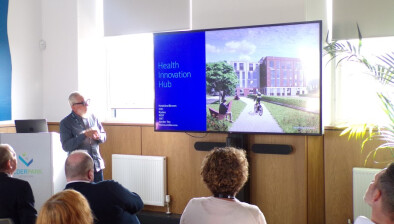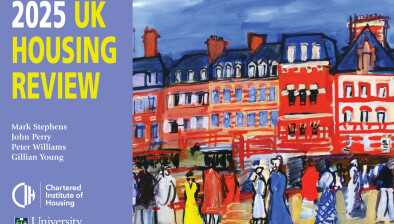Research into poor air quality inside modern homes receives international recognition
 A team of British architects have been recognised by the Chartered Institute of Building Services Engineers (CIBSE) after years of research into poor indoor air quality in modern homes.
A team of British architects have been recognised by the Chartered Institute of Building Services Engineers (CIBSE) after years of research into poor indoor air quality in modern homes.
Dr Stirling Howieson, University of Strathclyde; Dr Tim Sharpe, Mackintosh Environmental Architecture Research Unit and Paul Farren, ASSIST Design Ltd. were presented with the Napier Shaw Bronze Medal award at the annual CIBSE President’s Award Dinner for their 2014 research paper, “Build Tight, Ventilating Right?”.
The paper demonstrated that standard air tightness levels within houses constructed to current regulations are likely to result in poor indoor air quality.
With most people spending 2/3 of their time at home, poor domestic air quality could present a significant health risk. Prolonged exposure to poor indoor air quality may result in a range of symptoms from reduced mental function, dizziness, fatigue, sensory irritation in the eyes, nose, throat and skin and related respiratory illness. Asthma sufferers will be more likely to suffer attack and other serious long term health difficulties may develop depending on the toxins present.
Further research by the team, undertaken on behalf of the Scottish Government, has led to a change in the Building Standards. From October 2015 all new homes in Scotland are to be fitted with bedroom CO2 monitors which will determine the quality of indoor air to alert dwellers.
ASSIST and the University of Strathclyde are also encouraging the development of ventilation solutions that are both passive and mechanical. They have designed two “healthy sustainable homes” using a healthy house methodology. In partnership with Irvine Housing Association, they will be constructing the homes in order to demonstrate both natural and mechanical methods of providing improved indoor air quality and balancing the need for a healthy environment with the desire to reduce energy use. The homes will be monitored for both indoor air quality and energy performance after occupancy.
Paul Farren said: “Our ultimate aim is to develop a house building methodology that can deliver low energy, healthy homes for less than £100K so that future dwellings can provide both healthy environments and deliver low energy costs whilst reducing CO2 emissions. To put the cost into perspective, Asthma UK estimate that the NHS spends more than £1bn per year on treating asthma and that 75 per cent of emergency asthma hospitalisations could have been prevented. We believe that improved housing conditions will help to prevent asthma attack and many other ailments.”
Current project partners include Irvine Housing Association, North Ayrshire Council and the Scottish Government and the design team wish to extend an open invite to sponsors for capital and research funding including expressions of interest from product manufacturers.









